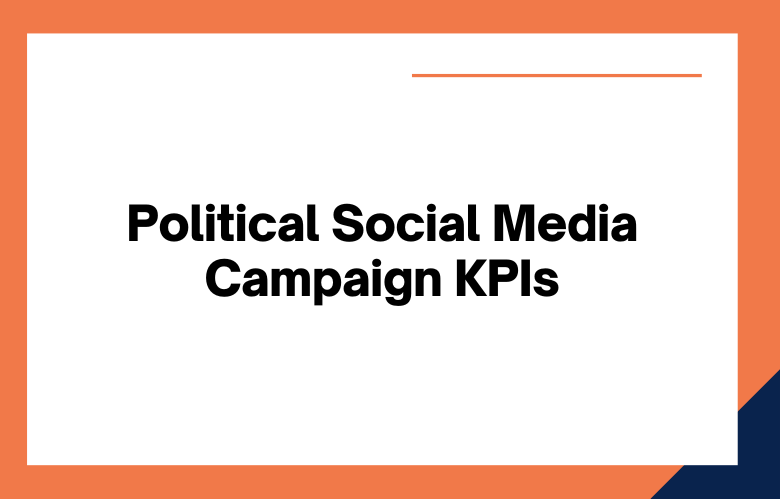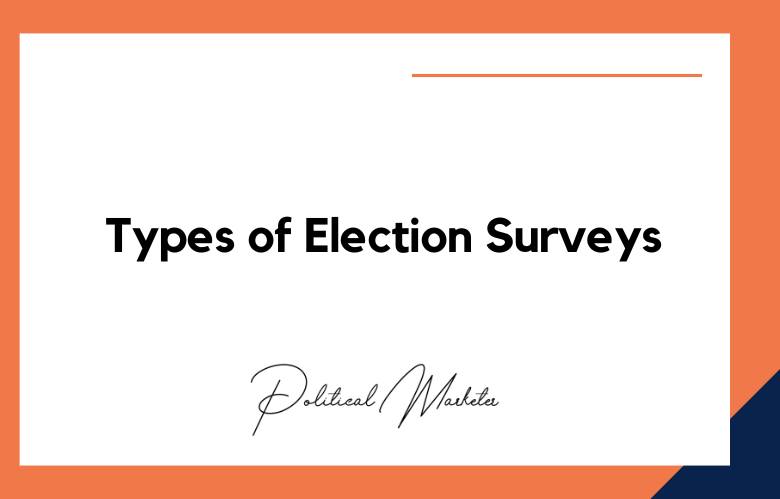In the era of social media, it’s more critical than ever for political candidates to have a strong presence online. After all, potential voters spend most of their time on social media. But more than simply having a social media account is required. A successful Political Social Media Campaign requires engagement with potential voters.
So, how can you tell if your campaign genuinely engages with its audience? Here are four key performance indicators (KPIs) to watch.
Social media has drastically changed the landscape of political campaigning.
What used to be a one-way conversation from the campaign to the voter is now a two-way street.
Candidates and campaigns can directly engage with potential voters and supporters online, building relationships that were once difficult to establish.
But with this new level of engagement comes new challenges. How can campaigns measure whether or not their social media efforts are truly paying off?
How can they tell if they’re building genuine relationships with voters or just adding noise to the overwhelming online conversation?
Here are KPIs that can help demonstrate authentic engagement in political and social media campaigns.
KPIs That Demonstrate True Engagement in Political Social Media Campaigns
Increased Web Traffic
When potential voters see your campaign’s social media posts and become interested in your platform, they should be able to find your website to learn more efficiently.
Monitor your website’s traffic to see if there has been an uptick in visitors since you launched your social media campaign.
If there has been, that’s a good sign that your campaign is doing its job of driving traffic to your site.
More Time Spent on Your Website
Once potential voters are on your website, you want them to stick around and explore what you offer.
Check your website’s analytics to see how long visitors spend on it. If they only stay for a few seconds before clicking away, that’s not good.
But if they spend several minutes reading through your platform and getting to know you and your team, that’s a great sign that they will engage with what you have to say.
More Subscribers to Your Email List
If you’re engaging potential voters with your social media posts, they should want to stay in the loop by subscribing to your email list.
As your subscriber list grows, so does the reach of your campaign.
Plus, once someone subscribed to your email list, you have their contact information so you can reach out to them directly.
More Volunteer Signups
An engaged audience is also a motivated one. Watch how many people sign up to volunteer for your campaign after seeing your social media posts.
The more volunteers you have, the more likely you are to win!
Number of Comments
The first KPI that can help demonstrate authentic engagement in political and social media campaigns is the number of comments received on posts.
Comments indicate that people are taking the time to read and respond to what you’re saying, which means they will engage with your content.
Keep an eye on the number of comments you receive and look for patterns. (For example, Are their specific topics inspiring more discussion than others? )
You can also compare the number of comments you receive to other metrics to get a more holistic picture of engagement ( More on that later ).
Number of Shares
The second KPI that can help demonstrate authentic engagement in political and social media campaigns is the number of shares received on posts.
Like commenting, sharing indicates that people are interested in what you’re saying and want to share it with their networks.
It helps increase your reach and expand your potential voter base. Monitor the number of shares you receive and track any patterns you see. ( Are there specific topics or post types people are likelier to share? )
Again, you can compare the number of shares you receive to other metrics for a more holistic picture.
Sentiment Analysis
Sentiment analysis is the third KPI that can help demonstrate authentic engagement in political and social media campaigns.
This measures how positive or negative people’s responses are to your content.
While tracking overall sentiment is important, looking at specific interactions and responses is essential.
This will help you understand how people feel about your campaign and allow you to adjust your strategy accordingly.
Overall Engagement Rate
This is the most vital metric to track when gauging the success of your political and social media campaign.
The engagement rate is simply a measure of how often users take action when they see your content.
This can include liking, sharing, commenting, or clicking on a link.
Sentiment
Sentiment analysis is a way of measuring the overall tone of the conversations taking place around your campaign.
Are people generally positive or negative about your candidate?
Sentiment is essential to monitor because it can be a leading indicator of your campaign’s long-term success.
Shares
Shares are the most valuable form of engagement from a purely business perspective. That’s because whenever someone shares your content, they effectively give you free advertising to all their friends and followers. Keep an eye on how often your content is shared, and try to identify any patterns or trends in the data.
Reach
Reach measures how far your content is spreading across the internet.
This metric is important because it indicates how effective your marketing efforts are at getting your content seen by new people.
A high reach number means more people see and engage with your content, which is always good!
Engagement Rate
The engagement rate measures how engaged your audience is with your content. It’s calculated by taking the number of engagements (likes, comments, shares, etc.) and dividing it by the number of impressions (the number of times your content is watched).
For example, if your post has been seen 100 times and has received 10 likes, its engagement rate would be 10%.
The engagement rate is significant because it shows whether people interact with your content when they see it.
Amplification Rate
The amplification rate measures how often your content is shared. It’s calculated by taking the number of shares and dividing it by the number of impressions.
For example, if your post has been seen 100 times and shared 10 times, its amplification rate would be 10%.
The amplification rate is crucial because it shows you how viral your content is and how likely people are to share it with their networks.
Conversation Rate
The conversation rate measures the number of back-and-forth exchanges between you and your audience (for example, comments on a post).
It’s calculated by taking the number of comments and dividing it by the number of impressions.
For example, if your post has been seen 100 times and has received 10 comments, its conversation rate would be 10%.
The conversation rate is crucial because it shows how well you can connect with your audience and start conversations about the issues that matter to them.
The Number of Reactions, Comments, and Shares per Post
The best way to gauge the engagement of your social media posts is to look at the number of reactions, comments, and shares each post receives.
A high number in all three categories indicates that people are not only seeing your post but are also finding it interesting enough to engage with it.
The Sentiment of Reactions, Comments, and Shares
In addition to examining the raw number of reactions, comments, and shares, you should also consider the sentiment behind those interactions.
Are people reacting positively or negatively to your posts? Are they leaving comments that are critical or supportive?
Are they sharing your posts with their friends or with their enemies?
Reactions, comments, and shared sentiments can gyou valuable insights into how people perceive your campaign.
The Engagement Rate
The engagement rate is a metric that measures the percentage of people who engage with your post (i.e., leave a reaction, comment, or share) out of the total number of people who see it.
To calculate your engagement rate, divide the sum of reactions, comments, and shares by the number of impressions (the number of times your post has been seen).
The Dwell Time
Another metric to measure engagement is dwell time—the time people spend on your post before moving on to something else.
You can calculate dwell time by looking at how long people spend reading or watching your content before they close out of it or click away to another website or app.
Dwell time indicates whether people found your content interesting or engaging enough to stay for more than a few seconds.
Conclusion
Several KPIs can help you gauge the success of your political and social media campaign, as you can see.
From increased web traffic and extended website visits to more email subscribers and volunteer signups, these metrics will give you a good idea of whether or not your campaign is resonating with potential voters and getting them engaged in the political process.
So start tracking these KPIs today and see how well your campaign performs!
Measuring engagement is critical to understanding the effectiveness of your political and social media campaigns.
The KPIs outlined in this blog post can help determine whether your target audience interacts with your content.
By tracking these key performance indicators, you can make data-driven decisions about where to allocate your resources for future campaigns and measure the success of past initiatives.
Have you tried any of the above methods to measure engagement?
What sort of results did you see?
Let us know your comments below, or contact us for political social media campaign consulting.
Call: +91 9848321284
Email: [email protected]










